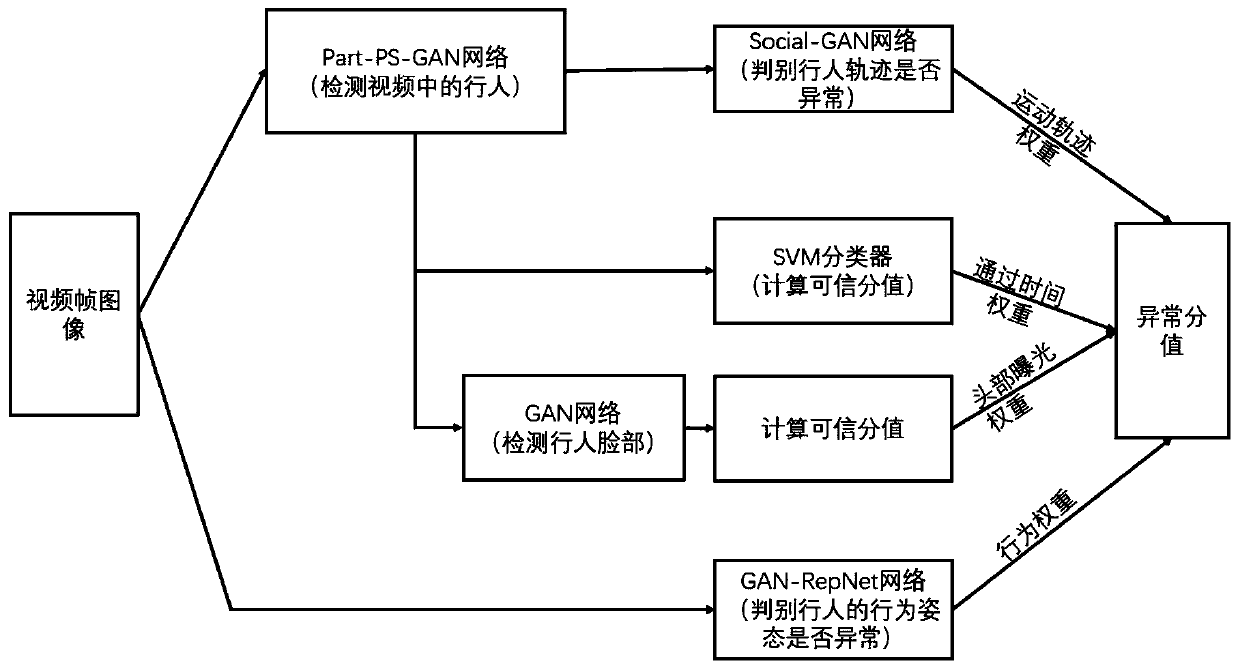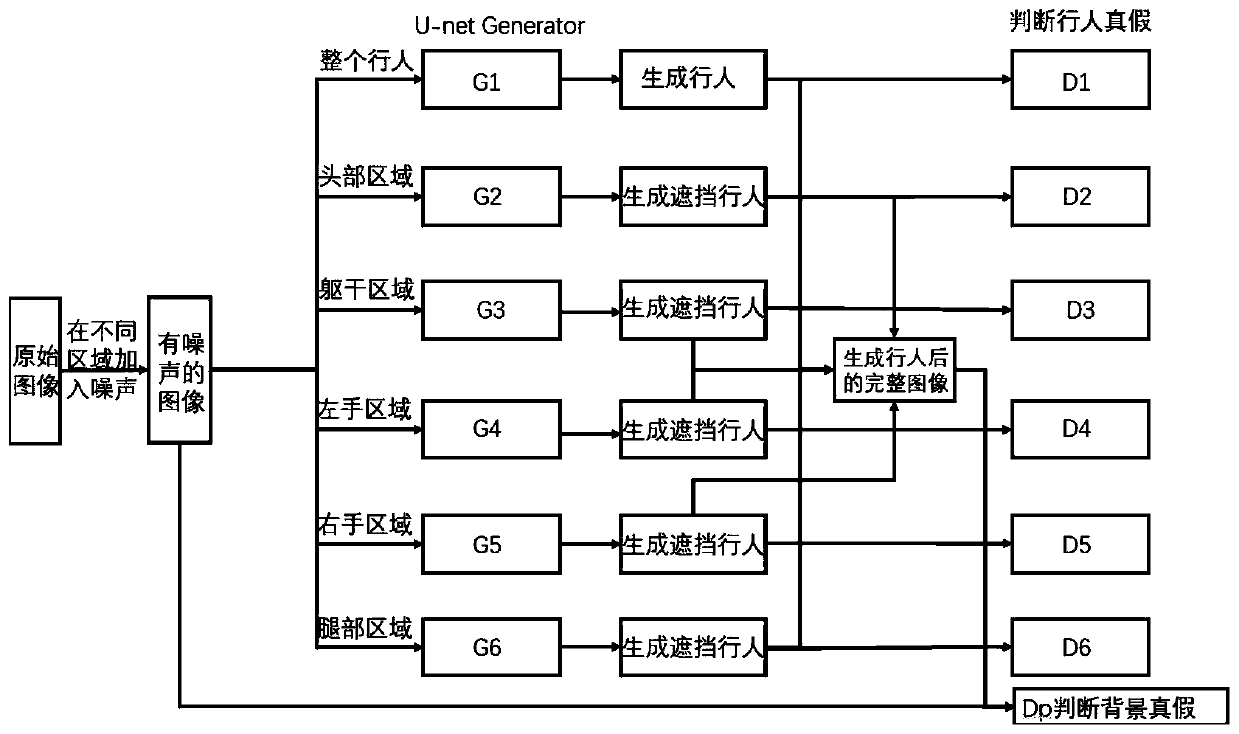Multi-factor joint abnormal pedestrian discrimination method based on generative adversarial network
A multi-factor, pedestrian technique, applied in the field of computer vision, can solve the problem of unreliable, unrecognizable success, etc.
- Summary
- Abstract
- Description
- Claims
- Application Information
AI Technical Summary
Problems solved by technology
Method used
Image
Examples
Embodiment Construction
[0078] The present invention defines abnormal pedestrians as: pedestrians whose behaviors are different between a certain individual or several individuals in the surveillance video and most of the crowd in the video. The behavior here includes factors such as movement trajectory, dwell time, facial exposure rate, and gesture.
[0079] The present invention is a multi-factor joint discrimination method for abnormal pedestrians based on generative confrontation network, which uses an improved Pedestrian-Synthesis-GAN network to detect and track pedestrians, and provides a basis for discriminating motion trajectories, recording passing time and the exposure time of pedestrians' heads . Use the Social-GAN network to predict pedestrian trajectories, calculate the similarity between the actual trajectory and the predicted trajectory, and get anomaly scores. The design uses SVM to discriminate the passing time of pedestrians and obtain the corresponding abnormal scores. Due to the...
PUM
 Login to View More
Login to View More Abstract
Description
Claims
Application Information
 Login to View More
Login to View More - R&D
- Intellectual Property
- Life Sciences
- Materials
- Tech Scout
- Unparalleled Data Quality
- Higher Quality Content
- 60% Fewer Hallucinations
Browse by: Latest US Patents, China's latest patents, Technical Efficacy Thesaurus, Application Domain, Technology Topic, Popular Technical Reports.
© 2025 PatSnap. All rights reserved.Legal|Privacy policy|Modern Slavery Act Transparency Statement|Sitemap|About US| Contact US: help@patsnap.com



